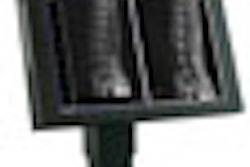Medical display manufacturers seem to be spotlighting a familiar refrain this year -- one long advocated by the consumer TV market: Bigger is better.
Yet while the U.S. government is forcing the TV industry to broadcast in a digital format starting in mid-February 2009, the medical display market at least is allowing market forces to drive digital acceptance, adoption, and implementation. In fact, several display companies may offer models that enable analog hookups, but those options are steadily declining as the industry migrates toward fully digital operations.

Flexibility and multimodality support are two other key elements. Some companies are offering single monitors that can switch back and forth between color and grayscale -- without sacrificing resolution -- or enable split-screen or image-within-image options. To accommodate the number and volume of images clinicians seek to view simultaneously, companies either are minimizing or eliminating the bezel that bisects a workstation view screen.
It's fairly commonplace now for medical displays to enable clinicians to view images from just about any modality, be it computed radiography, digital radiography, CT, MR, ultrasound, or x-ray, from a single monitor. And new medical display models count connectivity to PACS, RIS, and electronic medical record systems as a standard feature and not an optional add-on for later. Such next-generation plug-and-play is here to stay as vendors seek to one-up each other on features and performance capabilities.
On the mergers and acquisitions front, the largest and most prominent of the year was NDS Surgical Imaging picking up Dome Imaging Systems from Planar Systems back in August, after Planar made a big splash at last year's RSNA by unveiling the 16-megapixel Dome Z16 medical display.
In addition to visiting the manufacturer booths, RSNA attendees will be able to browse displays in the booths of a number of distributors, such as Ampronix (Booth 9100), Data Distributing (Booth 9037), Double Black Imaging (Booth 4676), Quest International (Booth 7510), and U.S. Electronics (Booth 4635).
Here's a rundown on what companies are exhibiting in Chicago beginning November 30.



















